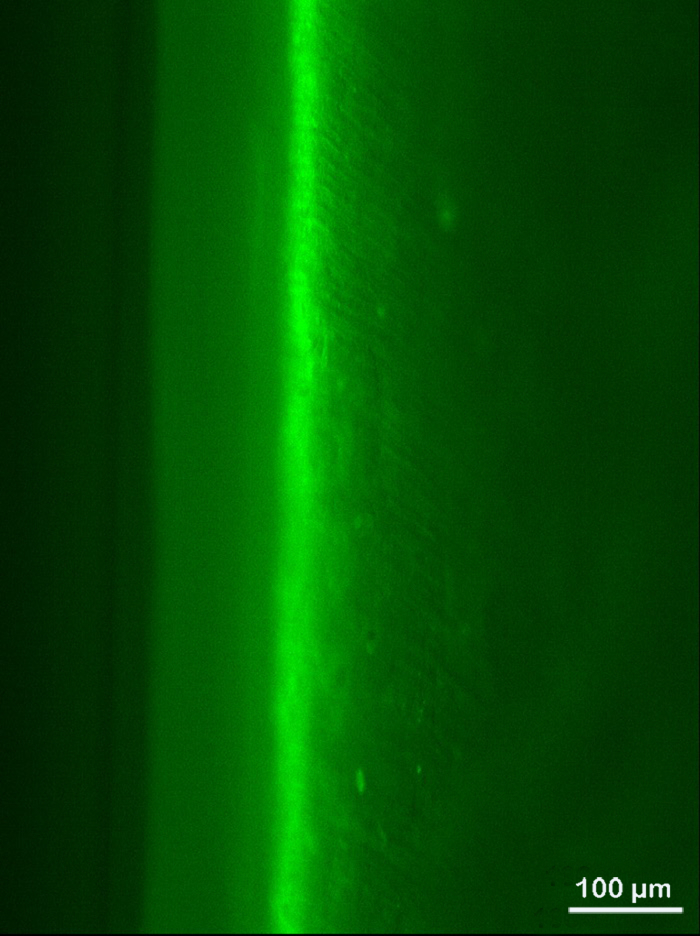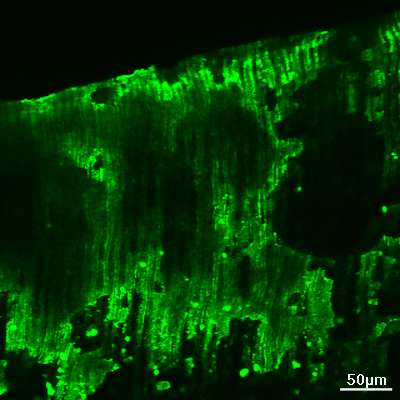IADR Abstract Archives
Root Canal System Contamination: a Standardization Model for Laboratory Studies With Confocal Laser Scanning Microscopy
Objectives: Enterococcus faecalis is the main bacteria responsible for failures in the endodontic treatment because they are able to invade the dentinal tubules. Given the due importance of the bacterial quantity as well as its level of penetration within the dentinal tubules for effectiveness analysis of antimicrobial substances in a tooth, this research aimed to determine the minimum incubation period for the bacterial growth and penetration within the dentinal tubules in order to develop a standardized model of contamination for laboratorial research, since there is no one available and scrutinized in the literature.
Methods: Twenty-four single-rooted human teeth wich had their crowns cut, their root canals instrumented, were sealed, waterproofed and placed in cryogenic tubes for autoclaving. In order to verify the sterilization process, two randomly chosen teeth were sectioned longitudinally and observed by scanning electronic microscopy. Other two teeth were put in Brain Heart Infusion (BHI) for 24 hours with subsequent analysis of the medium turvity. The remaining teeth were inoculated with 100µl of a suspension containing nearly 1.96 x 108UFC/ml of Enterococcus faecalis (ATCC 29212) and each cryogenic tube was filled with BHI. According to the incubation time, they were randomly divided into four groups (n = 5): G1 - 72 hours; G2 - 07 days; G3 - 14 days; G4 - 21 days and incubated at 37oC, with orbital shaking at 150rpm. After the period of each group, the contaminated culture medium underwent through serial dilutions for the counting of colony-forming units. The specimens were cut longitudinally, stained with LIVE / DEAD® BacLight™ Bacterial Viability Kit and analyzed by Laser Scanning Confocal Microscopy evaluating the bacterial viability and penetration. The results were analyzed using the ANOVA or TURKEY tests with a 5% level of significance.
Results: Bacterial viability and its penetration along the dentinal tubules was verified with no statistically significant difference between the four incubation periods at the model used.
Conclusions: This work concluded that the bacterial growth and the penetration were present in the first 72 hours at the model used, dispensing longer observational periods for the accomplishment of scientific works in this area.
Methods: Twenty-four single-rooted human teeth wich had their crowns cut, their root canals instrumented, were sealed, waterproofed and placed in cryogenic tubes for autoclaving. In order to verify the sterilization process, two randomly chosen teeth were sectioned longitudinally and observed by scanning electronic microscopy. Other two teeth were put in Brain Heart Infusion (BHI) for 24 hours with subsequent analysis of the medium turvity. The remaining teeth were inoculated with 100µl of a suspension containing nearly 1.96 x 108UFC/ml of Enterococcus faecalis (ATCC 29212) and each cryogenic tube was filled with BHI. According to the incubation time, they were randomly divided into four groups (n = 5): G1 - 72 hours; G2 - 07 days; G3 - 14 days; G4 - 21 days and incubated at 37oC, with orbital shaking at 150rpm. After the period of each group, the contaminated culture medium underwent through serial dilutions for the counting of colony-forming units. The specimens were cut longitudinally, stained with LIVE / DEAD® BacLight™ Bacterial Viability Kit and analyzed by Laser Scanning Confocal Microscopy evaluating the bacterial viability and penetration. The results were analyzed using the ANOVA or TURKEY tests with a 5% level of significance.
Results: Bacterial viability and its penetration along the dentinal tubules was verified with no statistically significant difference between the four incubation periods at the model used.
Conclusions: This work concluded that the bacterial growth and the penetration were present in the first 72 hours at the model used, dispensing longer observational periods for the accomplishment of scientific works in this area.


